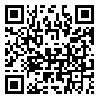BibTeX | RIS | EndNote | Medlars | ProCite | Reference Manager | RefWorks
Send citation to:
URL: http://mjiri.iums.ac.ir/article-1-2556-en.html
Background :Many studies have reported the increase in strength of the untrained contralateral limb after unilateral training. The aim of this study was to compare the cross education effect in the young and elderly persons.
Methods : In this quasi-experimental and pre-post study, 12 young people aged 28.25 ±3.11 years and 12 elderly persons (aged 73.08 ± 5.3 years) participated. The subjects had no history of strength training and upper limb movement impairments. Maximal isometric flexion strength in the dominant limb and the contralateral side before and after training were measured by tensiometer. Subjects performed elbow flexion exercises in the dominant side, using 3 sets of 10 repetition of the 60-70% maximal force for two weeks. Independent and paired t test were used to analyze between and within groups differences.
Results : The results showed that short-term isometric resistive exercise led to a significant increase of strength in trained and untrained limbs in both groups (p<0.05). There was not a significant difference between the two groups in the rate of strength increase, both in the upper limb that was exercised and also in the opposite side (p> 0.05).
Conclusion : The increased muscle strength observed during training indicates positive effect of training in old adult. The increased muscle strength in untrained limb suggests the capacity of neuromuscular adaptation among old adults, suitable to be used in cases of limb immobility or unilateral impairment.
| Rights and permissions | |
 |
This work is licensed under a Creative Commons Attribution-NonCommercial 4.0 International License. |





